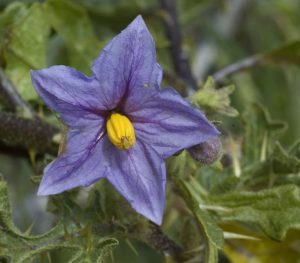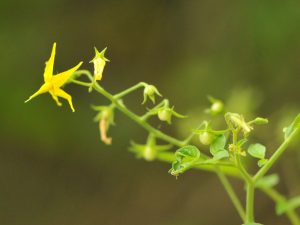 A global survey has identified major gaps in our collections of wild species related to crops. The survey found that more than half of the 455 Crop Wild Relative (CWR) species studied have little or no material conserved in the global network of seed banks. Results were released by the International Center for Tropical Agriculture (CIAT) in Cali, Colombia, who form a part of a large international consortium on CWR conservation led by the Global Crop Diversity Trust. Nature News covered the story yesterday and reported a shorter summary of the findings.
A global survey has identified major gaps in our collections of wild species related to crops. The survey found that more than half of the 455 Crop Wild Relative (CWR) species studied have little or no material conserved in the global network of seed banks. Results were released by the International Center for Tropical Agriculture (CIAT) in Cali, Colombia, who form a part of a large international consortium on CWR conservation led by the Global Crop Diversity Trust. Nature News covered the story yesterday and reported a shorter summary of the findings.
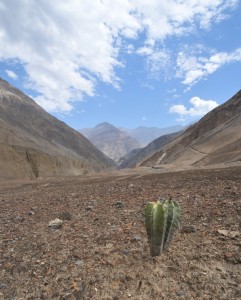 Wild species related to crops are an enourmous resource for agriculture. They are used in breeding programs for introducing novel traits into our cultivated crops, including traits such as drought tolerance and disease resistance. Despite their importance in agriculture, there has been surprisingly little research on their conservation status and biology. The current survey is the most comprehensive study of CWR species done thus far, and identifies priorities for collecting efforts and future research.
Wild species related to crops are an enourmous resource for agriculture. They are used in breeding programs for introducing novel traits into our cultivated crops, including traits such as drought tolerance and disease resistance. Despite their importance in agriculture, there has been surprisingly little research on their conservation status and biology. The current survey is the most comprehensive study of CWR species done thus far, and identifies priorities for collecting efforts and future research.
The survey included 29 of the most important crops, but plans are in place to analyse a further 60 crops and their wild genepools. RBGE staff Tiina Sarkinen has been involved in the project through her work with the plant family Solanaceae. The Solanaceae expert team, including Sandra Knapp from the Natural History Museum London, and Maria Vorontsova from the Royal Botanic Garden, Kew, formed the research team behind the cultivated eggplant and its wild relatives. The cultivated eggplant, also known as the scarlet or brinjal eggplant, was highlighted as one of the most poorly conserved crop genepools in the survey.
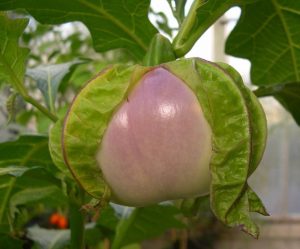 The eggplant story highlights the importance of understanding the basic biology behind our crops. Until recently, we knew very little about the taxonomy and molecular systematics of the eggplant and its close relatives. The poor knowledge meant that we were not able to identify eggplant wild relatives with any certainty, nor did we know where they occur or how many species there were. And when you don’t know what the CWR species are, how can you protect or conserve them? How can you aim to collect something you do not even know how to identify or recognise in the field? Or in the worst case, how can you collect something if you do not even know that it exists. This is the major argument behind taxonomy. We need to know the species before we can conserve them. In the case of the eggplant, thanks to a proper taxonomic revision of the Old World Spiny Solanum clade by Sandra Knapp and Maria Vorontsova (submitted, soon to be published!), we now can do that.
The eggplant story highlights the importance of understanding the basic biology behind our crops. Until recently, we knew very little about the taxonomy and molecular systematics of the eggplant and its close relatives. The poor knowledge meant that we were not able to identify eggplant wild relatives with any certainty, nor did we know where they occur or how many species there were. And when you don’t know what the CWR species are, how can you protect or conserve them? How can you aim to collect something you do not even know how to identify or recognise in the field? Or in the worst case, how can you collect something if you do not even know that it exists. This is the major argument behind taxonomy. We need to know the species before we can conserve them. In the case of the eggplant, thanks to a proper taxonomic revision of the Old World Spiny Solanum clade by Sandra Knapp and Maria Vorontsova (submitted, soon to be published!), we now can do that.
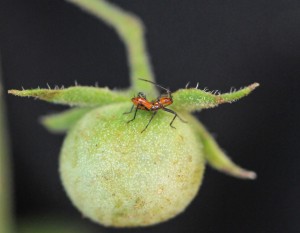 Another question that the eggplant project highlights is how to delimit genepools – this is not as simple as it first appears. In a large genus such as Solanum, with c. 1,500 species and several major crop species inside a single genus (tomato, potato, eggplant, and pepino), where does one genepool end and another begin? The answer for eggplant is complicated. The molecular phylogenetic data shows clearly that the cultivated eggplant (Solanum melongena) sits in the middle of a diverse clade with c. 450 species. Are all of these wild relatives of the eggplant? Our practical decision was to delimit the genepool based on a combination of criteria, including crossability (Can species hybridise with S. melongena?), phylogenetic proximity (How related are they based on molecular data?), and agronomic interest (Which species have the greatest potential of contributing valuable traits to breeding efforts?). A paper on the wild relatives of eggplant was published by Sandra Knapp, Maria Vorontsova and Jaime Prohens in PLoS One earlier this year.
Another question that the eggplant project highlights is how to delimit genepools – this is not as simple as it first appears. In a large genus such as Solanum, with c. 1,500 species and several major crop species inside a single genus (tomato, potato, eggplant, and pepino), where does one genepool end and another begin? The answer for eggplant is complicated. The molecular phylogenetic data shows clearly that the cultivated eggplant (Solanum melongena) sits in the middle of a diverse clade with c. 450 species. Are all of these wild relatives of the eggplant? Our practical decision was to delimit the genepool based on a combination of criteria, including crossability (Can species hybridise with S. melongena?), phylogenetic proximity (How related are they based on molecular data?), and agronomic interest (Which species have the greatest potential of contributing valuable traits to breeding efforts?). A paper on the wild relatives of eggplant was published by Sandra Knapp, Maria Vorontsova and Jaime Prohens in PLoS One earlier this year.
The work continues. Next stage of the survey will look at a further set of 60 crop species and their genepools, including the cultivated tomato (Solanum lycopersicum). The Solanaceae team has been part of the extended survey by contributing to the research on tomato. Many of the tomato CWR species are narrow endemics native to the dry valleys of Peru (e.g., Solanum arcanum, imaged above, near Santa Cruz, Cajamarca Department, Peru).

